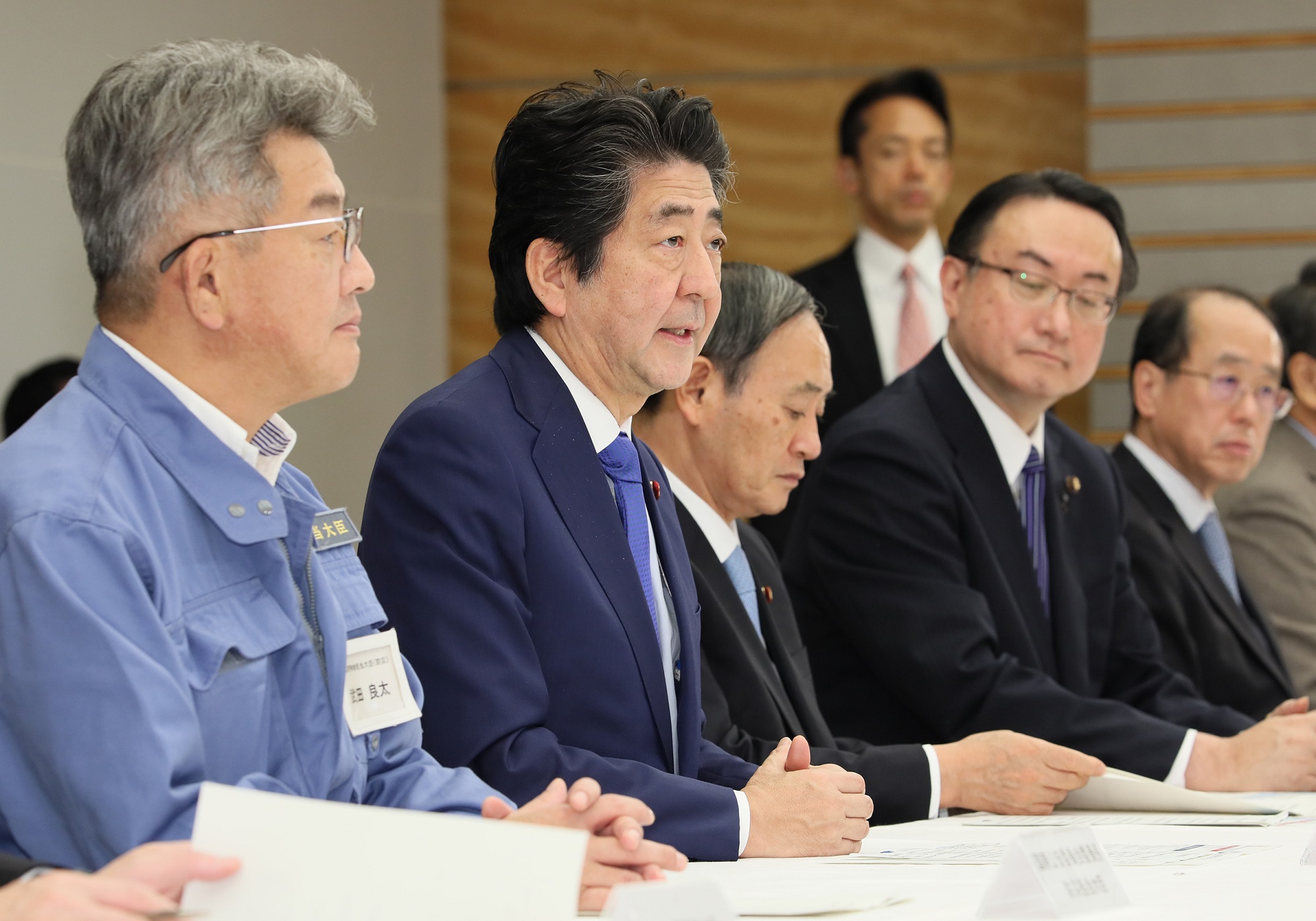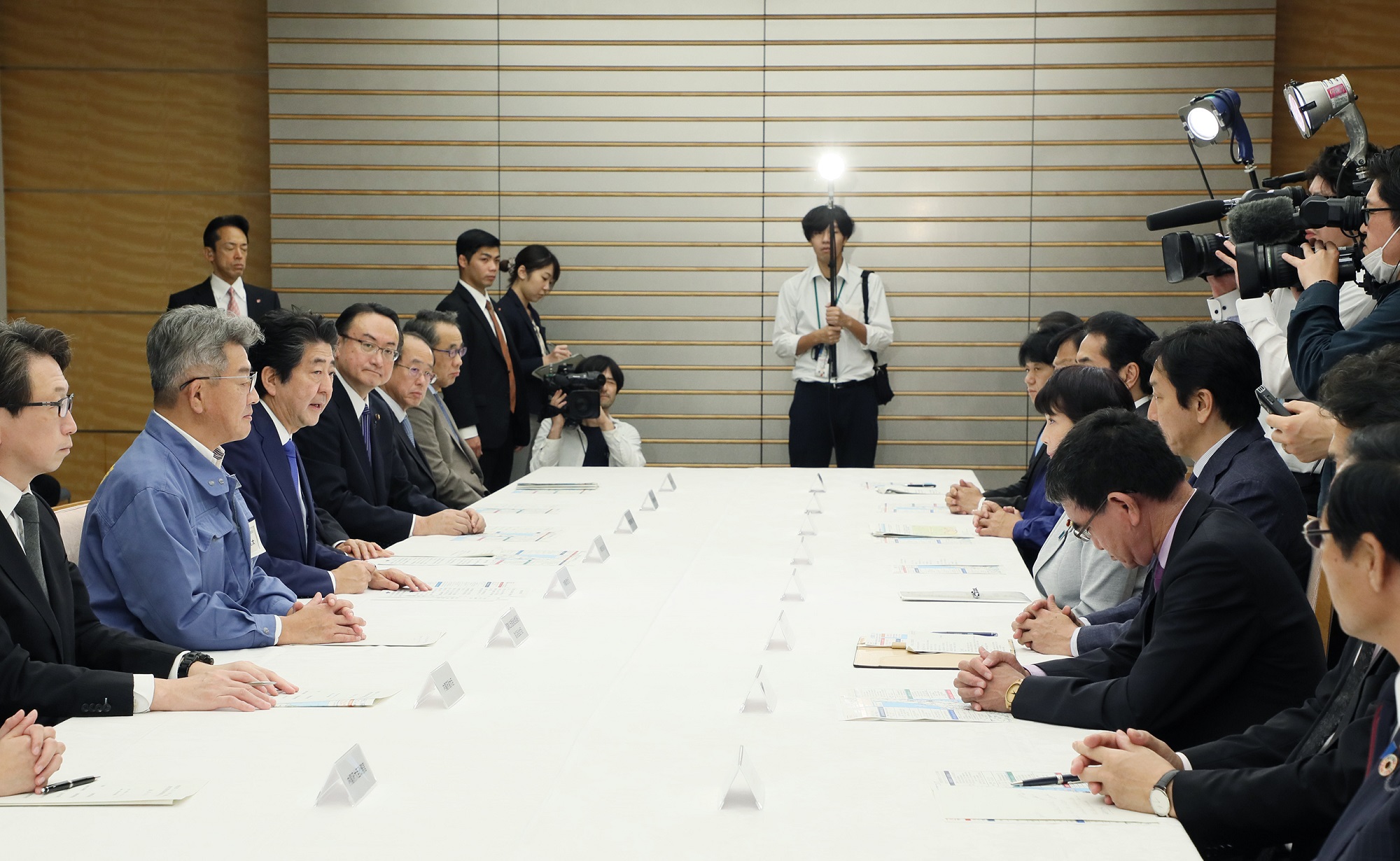Home > News > The Prime Minister in Action > October 2019 > Ninth Meeting of the Emergency Response Headquarters for Typhoon No. 19 of 2019
The Prime Minister in Action
Ninth Meeting of the Emergency Response Headquarters for Typhoon No. 19 of 2019
October 19, 2019
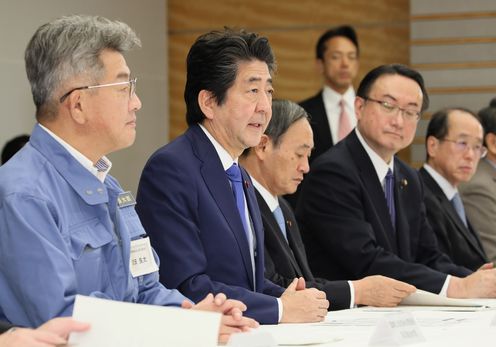
Photograph of the Prime Minister making a statement (1)
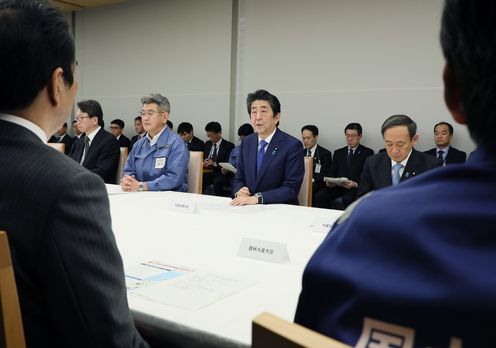
Photograph of the Prime Minister making a statement (2)
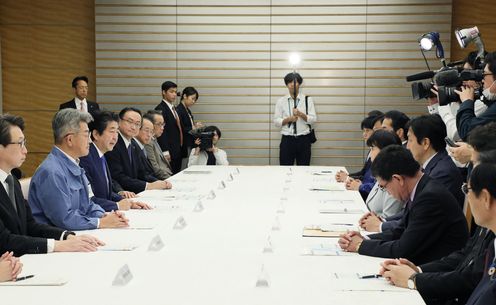
Photograph of the Prime Minister making a statement (3)
[Provisional Translation]
On October 19, 2019, Prime Minister Shinzo Abe held the ninth meeting of the Emergency Response Headquarters for Typhoon No. 19* of 2019 at the Prime Minister’s Office.
Based on the discussion, the Prime Minister said,
“It has been one week since the disaster caused by the heavy rains from Typhoon No. 19*. Even now there are people who remain unaccounted for in the affected areas, and over 4,000 people are being forced to live inconvenient lives in evacuation centers. I ask everyone to continue to exert every effort in the search for missing people, and to support the daily lives of those affected by the disaster.
We are advancing at a fast pace the repair of river embankments destroyed by the heavy rains, in order to recover safety and peace of mind of those affected by the disaster. With respect to the rivers managed by the national government, while there have been 12 cases of the collapse of embankments, the temporary embankments have already been constructed at eight sites, and two more will be completed today. We will move forward emergency repair work day and night at the remaining sites as well.
In addition, yesterday afternoon, the Governor of Ibaraki Prefecture sent a request to the Government to undertake the repair work of two embankments, and in lieu of the prefecture, the Government has started those repair work swiftly at nine p.m. at the same day. With respect to other rivers, the Government will support those repair work proactively as needed.
The Technical Emergency Control FORCE (TEC-FORCE) is extending technical support on work which is difficult for local governments in the affected areas to undertake, such as damage assessment and the selection of repair methods. Today, 709 officers are being dispatched nation-wide from across the country.
Relief supplies continue to be delivered to evacuation centers through push-mode support, in response to various needs for food, beverages, and daily goods. In evacuation centers, we are making efforts to secureResources are arriving at evacuation centers through continuing push-mode support, fulfilling various needs related to food, beverages, and daily goods. In addition, at evacuation centers, the Self-Defense Forces (SDF) are conducting bathing assistance at 19 locations in seven prefectures, and providing emergency meals in consideration of the needs of the disaster victims. We are also working hard towards the health management of the evacuees, including dispatching doctors and health practitioners from across the country for healthcare, and working to improve the living environments at evacuation centers. Furthermore, in order to strengthen crime prevention measures in disaster-affected regions, we are conducting patrol activities using police cars dispatched from across the country, facilitating consultation services and crime prevention guidance at evacuation centers, and working to ensure the safety and security of the people in the disaster-affected regions.
Circumstances permitting, I will visit the affected areas in Nagano Prefecture tomorrow to obtain a better sense of the actual damages and listen to requests directly from the people and local governments affected by the disaster.
Heavy rain has continued to fall in the disaster-affected regions, since last night. I ask that people in these regions take care when cleaning up their houses, and that everyone continue to pay full attention to the information issued by the local governments, and to be mindful of evacuating early without letting down your guard at any moment.
Many volunteers are starting work at sites affected by the disaster. The Government as well will further accelerate the support for the daily lives of disaster victims. I ask everyone to continue to make every effort for the reconstruction of lives in the disaster-affected areas, and for the reconstruction of ‘nariwai’ (occupations and livelihoods that sustain people’s daily lives).”
*Typhoon Hagibis

